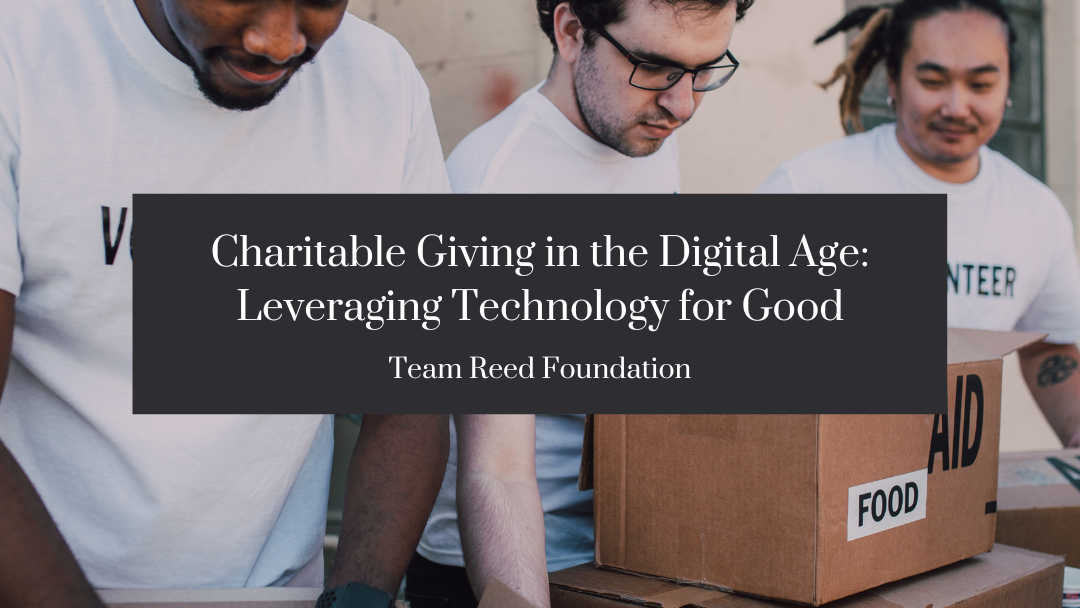The landscape of charitable giving has undergone a remarkable transformation in recent years, thanks to the digital age. With the advent of technology, philanthropy has become more accessible, efficient, and transparent than ever before. From online fundraising platforms to social media campaigns, technology has empowered individuals and organizations to make a significant impact in the world of charitable giving.
Online Fundraising Platforms
One of the most prominent developments in charitable giving is the proliferation of online fundraising platforms. Websites and apps like GoFundMe, Kickstarter, and Indiegogo have made it easier for individuals and nonprofits to raise funds for causes they care about. These platforms allow users to create customized campaigns, share their stories, and reach a global audience. Whether it’s helping a friend cover medical expenses or supporting a grassroots initiative halfway across the world, online fundraising platforms have democratized the act of giving.
Cryptocurrency and Blockchain
The rise of cryptocurrencies like Bitcoin and blockchain technology has also had a significant impact on charitable giving. Cryptocurrencies enable quick, secure, and transparent transactions, making them ideal for charitable donations. Organizations like the Pineapple Fund, which donated millions in Bitcoin to various charities, have demonstrated the potential of digital currencies in philanthropy. Blockchain technology, with its ability to create immutable records of transactions, enhances transparency and trust in the donation process, ensuring that funds reach their intended destinations.
Social Media Campaigns
Social media has become a powerful tool for raising awareness and funds for charitable causes. Hashtags like #GivingTuesday and #CharityChallenge have turned social platforms into hubs for philanthropic activities. Nonprofits and individuals alike leverage the reach of social media to share compelling stories, engage with supporters, and encourage donations. Platforms like Facebook also offer features that allow users to set up fundraisers for specific causes, making it easy for friends and followers to contribute.
Peer-to-Peer Fundraising
Peer-to-peer fundraising is another digital innovation that has gained traction. This model empowers individuals to fundraise on behalf of a nonprofit organization. Participants create personal fundraising pages, share them with their networks, and encourage friends and family to donate. This approach leverages social connections and encourages friendly competition, resulting in higher engagement and donations. It’s a win-win for both supporters and organizations.
Data Analytics and AI
Technology has enabled nonprofits to analyze vast amounts of data to better understand donor behavior and preferences. Through data analytics and artificial intelligence (AI), organizations can personalize their outreach efforts, targeting donors with messages and appeals that resonate with their interests. This data-driven approach not only improves fundraising effectiveness but also enhances donor engagement and retention.
Mobile Giving
Mobile devices have become an integral part of our lives, and this trend extends to charitable giving. Mobile apps and text-to-donate campaigns make it incredibly convenient for individuals to contribute to causes on the go. Whether responding to a disaster relief appeal or supporting a local charity, mobile giving allows donors to make a difference with just a few taps on their smartphones.
Transparency and Accountability
The digital age has placed a premium on transparency and accountability in the nonprofit sector. Donors now expect to see where their contributions are going and the impact they’re making. Technology enables organizations to provide real-time updates on projects, track expenditures, and showcase the tangible outcomes of their work. This transparency fosters trust and confidence among donors, encouraging continued support.
Global Reach
Digital technology has eliminated geographical barriers to charitable giving. Donors can support causes halfway around the world as easily as they can support local initiatives. Online platforms and international payment gateways have made it possible for donors to contribute in different currencies and support a diverse range of projects. This global reach has expanded the scope of philanthropy and increased its potential for impact.
Crowdfunding for Good
Crowdfunding, initially associated with startups and creative projects, has evolved into a powerful tool for charitable endeavors. Websites like Kiva and DonorsChoose connect donors directly with individuals and communities in need. Donors can browse profiles, read stories, and select specific projects to support. Crowdfunding has enabled micro-donations that collectively have a significant impact on addressing various social challenges.
The digital age has ushered in a new era of charitable giving, one that is marked by accessibility, transparency, and efficiency. Technology has democratized philanthropy, allowing individuals and organizations of all sizes to contribute to causes they are passionate about. As we navigate this digital landscape, it’s essential to harness the power of technology for good and ensure that charitable giving continues to make a positive impact on the world. Whether you’re a donor, a nonprofit, or a fundraiser, embracing these digital tools can help you play your part in creating a better future for all.

